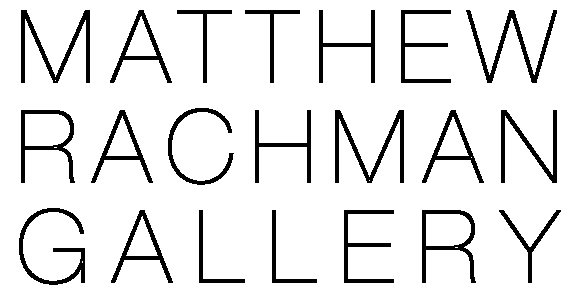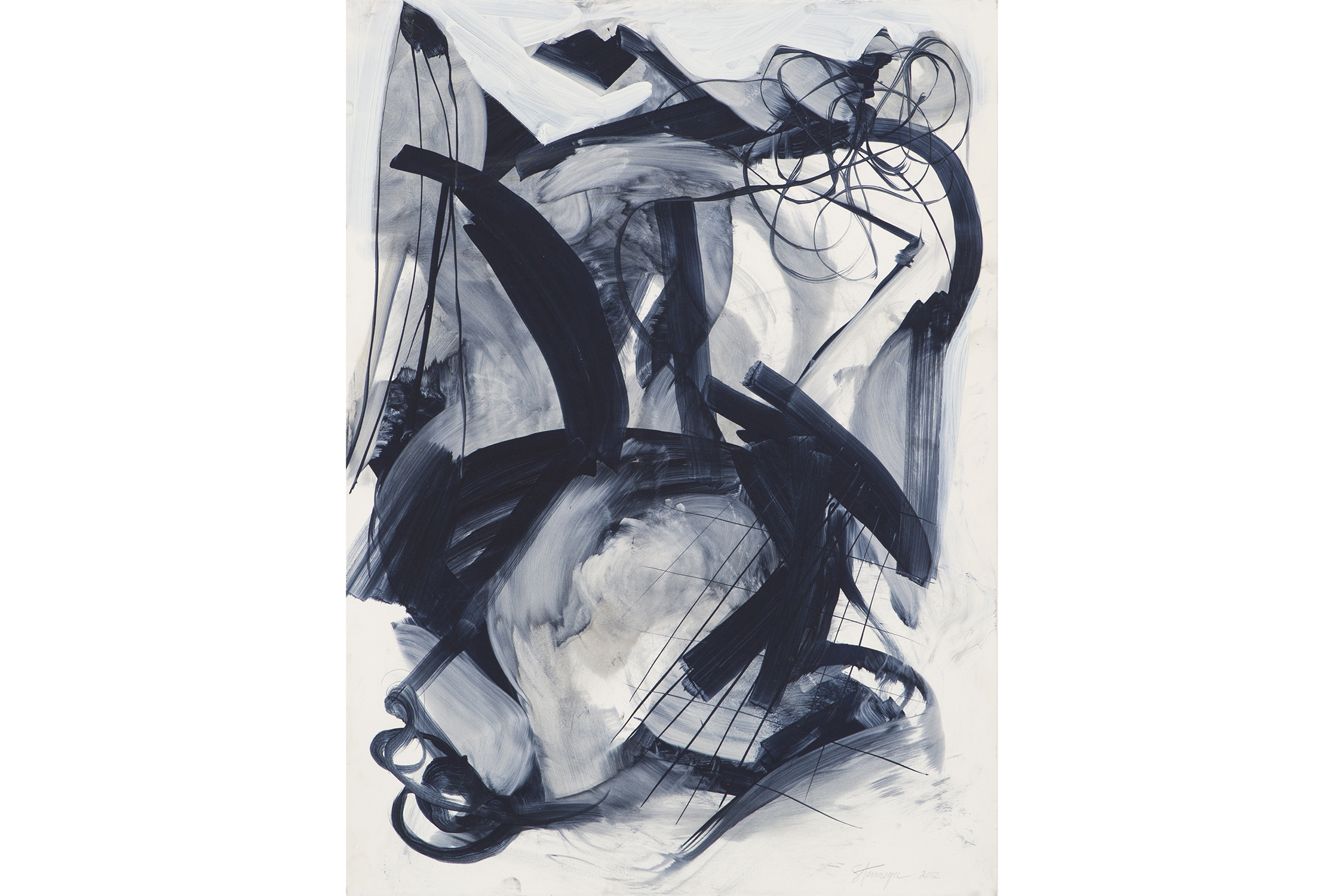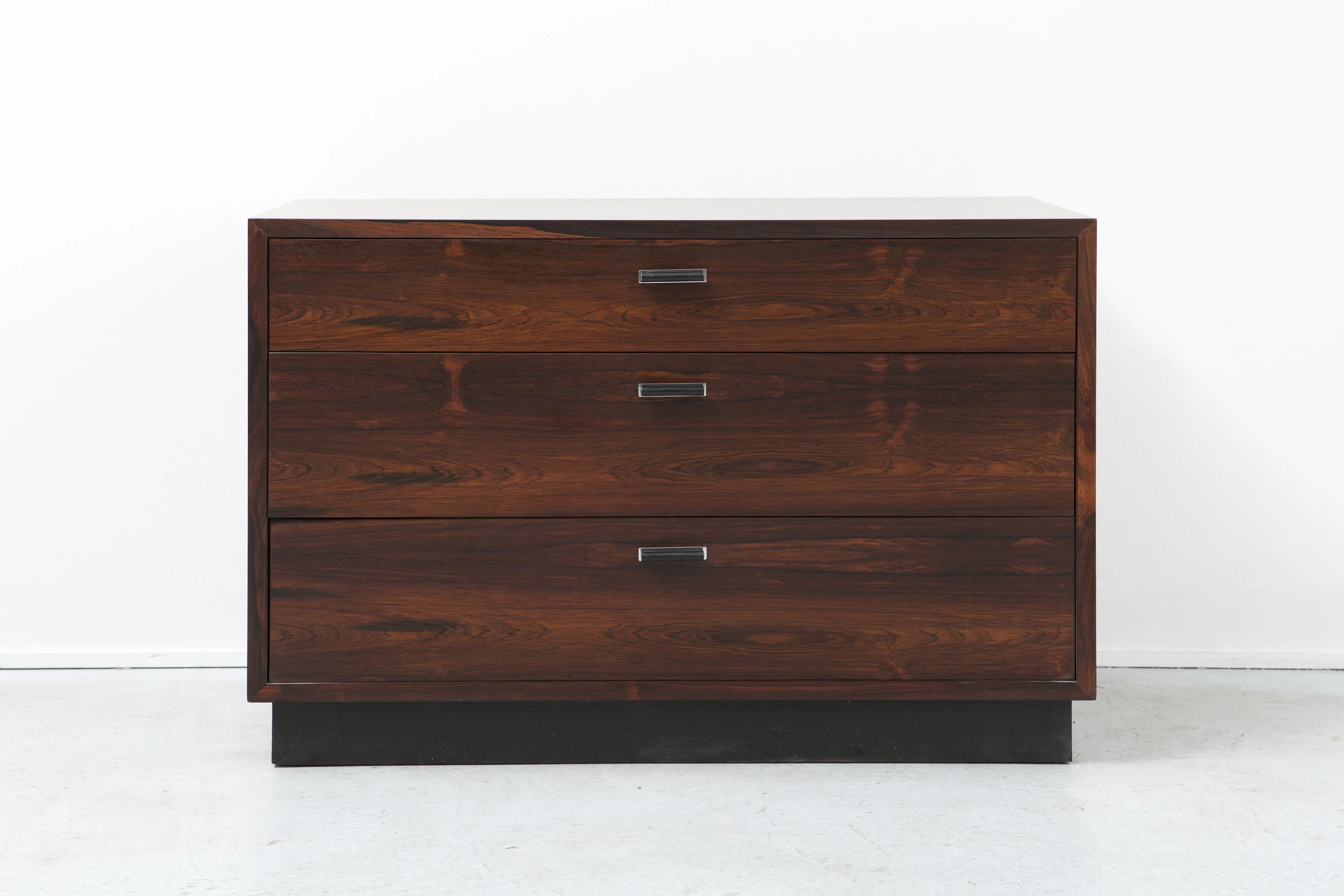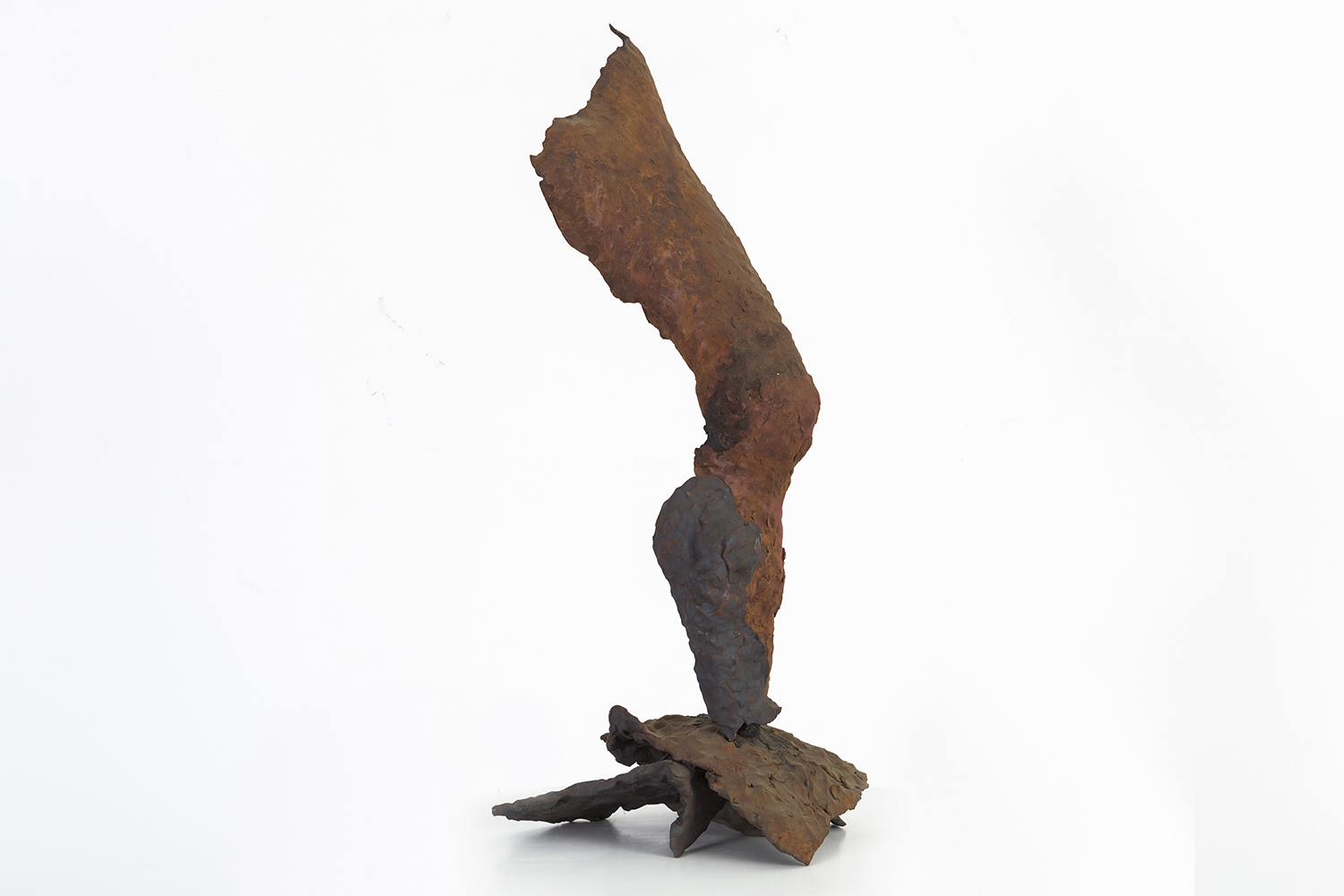SET OF ADRIAN PEARSALL WINGBACK CHAIRS + OTTOMANS
The history of the wingback chair goes back at least as far as the 17th century. Its original purpose was to keep out the drafts of cold air while sitting by the fire. Since then, it has come a long way, and because of its unusual shape, many designers have used it as a chance to elaborate on their distinct forms. This Model 2231-C Wingback Chair with ottomans is no exception. Pearsall’s Atomic Age shapes beautifully compliment the wingback format. His fusion of traditional woodworking with dynamic lines created a timeless piece of American furniture that would look good in nearly any home.
NIELS BENDTSEN COFFEE TABLE
Niels Bendtsen is a Danish-Canadian designer whose education traces back to Jacob Kjær, the designer of the FN chair used at the United Nations. Niels Bendtsen’s father studied directly with Kjær, while Niels apprenticed in his father’s cabinet making shop. Although Bendtsen’s design focuses much more on using metal and glass, it is easy to see the Danish tradition in his pieces. Tight curves accentuate a restrained, minimal design. Because he can rely on the strength of the materials, the table itself has thin, reduced parts that create an elegant structure that both frames and supports the piece. This table has been refinished in a vibrant fuschia that accentuates its futuristic character.
TUMBLEWEED BY MAURA SEGAL
Maura Segal is an artist working out of Los Angeles, California. Drawing inspiration from the contrasting natural and developed landscapes, she paints canvases that articulate these unions. The layers of Segal’s paintings are most telling, featuring a bed of hand cut pieces of paper that get painted over. These subtly collaged pieces are scattered like stray plants in the desert. Segal then paints squares and rectangles of various sizes to further cut up or distribute the field. On some of her paintings, layers of thinly cut paper are attached that mimic the flight of a bee as much as a network of highways and roads. These processes confuse the notions of natural and developed through their depiction of shapes. In doing so, Maura Segal has found a unique way to tap into her environment and unravel the strangeness of it.














